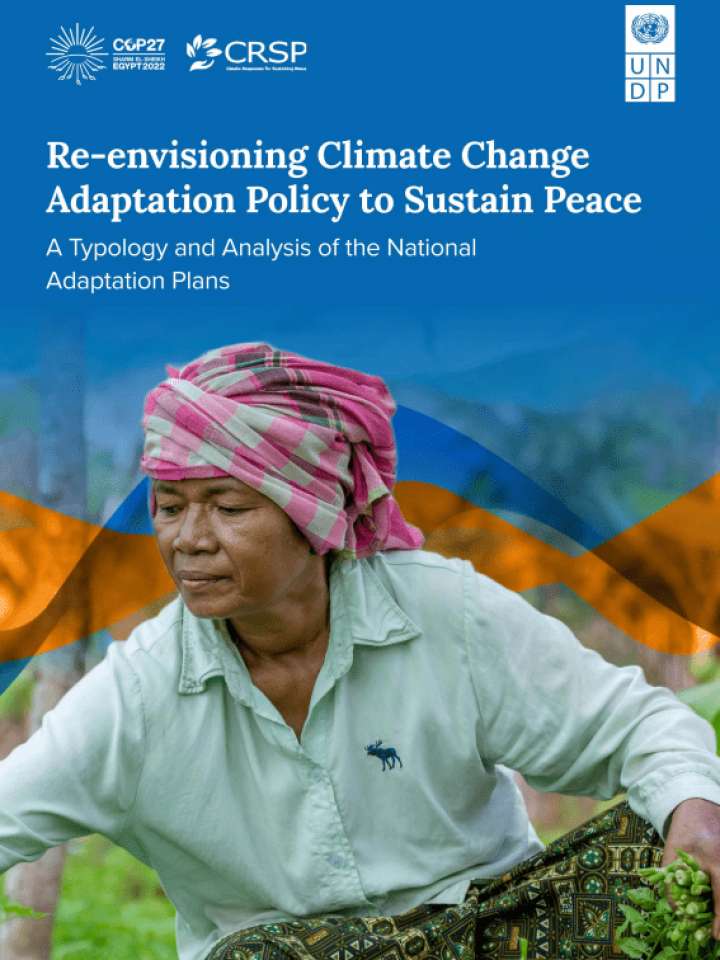Re-envisioning climate change adaptation policy to sustain peace - A typology and analysis of the National Adaptation Plans
This study maps the extent to which climate, peace and security intersections are addressed in the National Adaptation Plans (NAPs) and offers a blueprint for the mainstreaming of climate-related security risks into the NAPs and for synergies between adaptation policies and peacebuilding efforts. This report attempts to take stock of how climate-related security risks are framed and addressed in the 44 NAPs published up to the period ending March 2023, by conducting an analysis, and applying and expanding on the typology of emerging themes originally developed by UNDP with the UNFCCC, in 2020.
The findings of this study show that climate, peace and security interlinkages are increasingly recognized in the context of assessing climate change vulnerability and developing adaptation policies. Notably, the most frequently made reference is to measures to integrate peace and security considerations which accounts for nearly a fifth of all references. The theme of climate change exacerbating extant conflict dynamics over access to natural resources accounts for the second-most at over 10% of all references. Another common narrative is climate change as a “threat” or “risk multiplier” effect in relation to natural resource-based conflicts. In this regard, there are many references to the increased risk of conflict among farmer, herder and/or fishing communities that rely on constrained water resources, land availability and fish stocks. This also points to the need for greater sector-specific analysis and action plans.
Explore further
